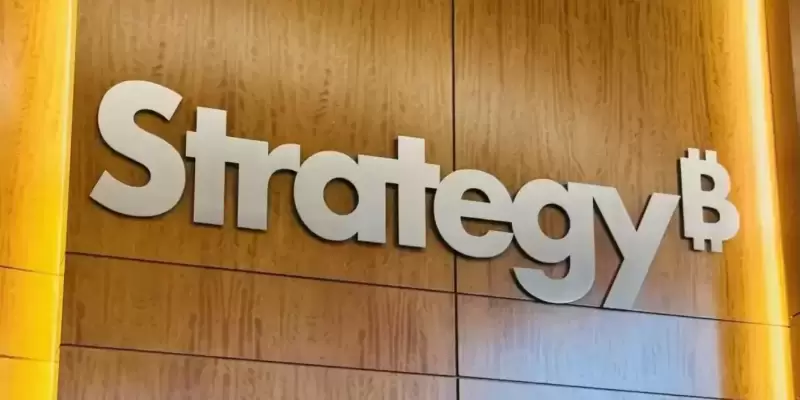 |
|
 |
|
 |
|
 |
|
 |
|
 |
|
 |
|
 |
|
 |
|
 |
|
 |
|
 |
|
 |
|
 |
|
 |
|
Cryptocurrency News Articles
Top 8 Crypto Assets to Watch in 2023: Unveiling the Future of Blockchain Innovation
Feb 06, 2025 at 07:15 am
The world of crypto is buzzing with action, and investors are always on the lookout for the best crypto presale opportunities. If you’re hunting for a project with massive growth potential, innovative technology, and real-world applications, you’re in the right place.

1. What is Qubetics ($TICS)?
Qubetics is a blockchain project that has been making waves recently. The project is currently in its 20th presale stage, and it has already managed to sell over 461 million tokens to more than 18,400 holders. The ongoing presale has raised a total of $11.9 million, which is a testament to the interest that investors have in Qubetics. At a price of $0.0667 per token, many analysts are predicting a skyrocketing valuation post-presale, with estimates ranging from $0.25 to as high as $15 after the mainnet launch.
One of the key aspects of Qubetics that is generating a lot of excitement is its decentralized VPN. This VPN is designed to provide users in Central Asia and beyond with a secure and private way to access the internet. For example, if you are a journalist working in a country with heavy internet restrictions, Qubetics’ decentralized VPN can allow you to browse securely without fear of censorship or surveillance. Additionally, for businesses handling sensitive data, the added security and decentralization provided by Qubetics can mean greater control and privacy over their data. And for everyday users, this VPN offers a safe and private browsing experience without having to rely on third-party providers.
This coin made it to this list because it is not just another token; it is a solution to a real-world problem. With its innovative technology and growing community, Qubetics stands as one of the best crypto presale opportunities today.
2. What is Kaspa (KAS)?
Kaspa is an innovative cryptocurrency that has been gaining attention due to its impressive scalability and speed. The key differentiator of Kaspa lies in its use of the GHOSTDAG consensus protocol.
Unlike traditional blockchains like Bitcoin or Ethereum, which process blocks sequentially, Kaspa allows blocks to be processed in parallel. This parallel block processing leads to a much higher transaction throughput, making Kaspa capable of handling thousands of transactions per second (TPS). This feature enables Kaspa to offer near-instant finality with low fees, addressing one of the most significant concerns facing many older blockchains—transaction congestion and slow processing times.
Kaspa’s architecture eliminates the bottleneck caused by traditional blockchains, and its use of a blockDAG structure instead of a linear blockchain provides a better solution for scalability. This design ensures the network remains decentralized and secure, avoiding issues like centralization of mining pools, which can threaten the integrity of some other networks.
Kaspa also has a growing ecosystem, with increasing developer interest and contributions. It has established itself as a potential candidate for use cases that demand fast, secure, and scalable blockchain solutions, such as microtransactions, real-time payments, and decentralized applications (dApps) that require high throughput.
3. What is Stacks (STX)?
Stacks is an innovative blockchain layer that aims to enhance the functionality of Bitcoin by enabling smart contracts and decentralized applications (dApps) on top of its robust and secure base. While Bitcoin is widely regarded as the most secure blockchain, it has limited programmability. Stacks addresses this limitation by bringing smart contract capabilities to Bitcoin through a layer-2 solution.
Stacks achieves this through its unique “Proof of Transfer” (PoX) mechanism, which uses Bitcoin’s native token (BTC) to secure the network and validate transactions. This method allows users to lock Bitcoin in a smart contract, effectively anchoring Stacks’ blockchain to Bitcoin’s security model.
The result is a blockchain that offers the benefits of Bitcoin’s decentralized security without sacrificing the programmability and flexibility needed for modern applications. Stacks enables developers to build on Bitcoin while preserving its decentralized nature.
With the Stacks blockchain, developers can create decentralized finance (DeFi) applications, non-fungible tokens (NFTs), and other Bitcoin-native dApps. Its growing ecosystem includes popular projects like the CityCoins initiative, as well as an increasing number of decentralized apps (dApps) looking to leverage Bitcoin’s security features while enabling additional functionalities. Stacks’ integration with Bitcoin makes it a compelling option for developers looking to build on the most secure blockchain while tapping into the potential of smart contracts and decentralized applications.
4. What is Quant (QNT)?
Quant is tackling one of the blockchain industry’s biggest obstacles: interoperability. The blockchain space is fragmented, with different networks often unable to communicate with each other or share data seamlessly. This lack of interoperability limits the potential for widespread blockchain adoption and creates silos across the ecosystem. Quant solves this problem with its Overledger Network, which allows different blockchains to connect and interact without requiring them to conform to a common standard.
The Overledger protocol works by acting as an intermediary layer, enabling multiple blockchains to communicate with each other in a decentralized and secure manner. It allows users and developers to interact with multiple blockchains simultaneously, creating a unified ecosystem of decentralized applications (dApps). Quant
Disclaimer:info@kdj.com
The information provided is not trading advice. kdj.com does not assume any responsibility for any investments made based on the information provided in this article. Cryptocurrencies are highly volatile and it is highly recommended that you invest with caution after thorough research!
If you believe that the content used on this website infringes your copyright, please contact us immediately (info@kdj.com) and we will delete it promptly.
-

-

- CFTC Withdraws Two Pieces of Crypto-Related Staff Guidance, Further Streamlining Its Approach to Crypto Regulation
- Apr 01, 2025 at 06:05 am
- The U.S. Commodity Futures Trading Commission (CFTC) withdrew two pieces of crypto-related staff guidance on Friday, further streamlining its approach to crypto regulation.
-

-

-

-

- After years of delays, Circle is finally moving toward a traditional IPO, enlisting JPMorgan and Citi to lead what could become the biggest crypto listing
- Apr 01, 2025 at 05:55 am
- The company, known for issuing the USD Coin (USDC) stablecoin, is expected to submit its IPO paperwork publicly by late April.
-

-

-




























































